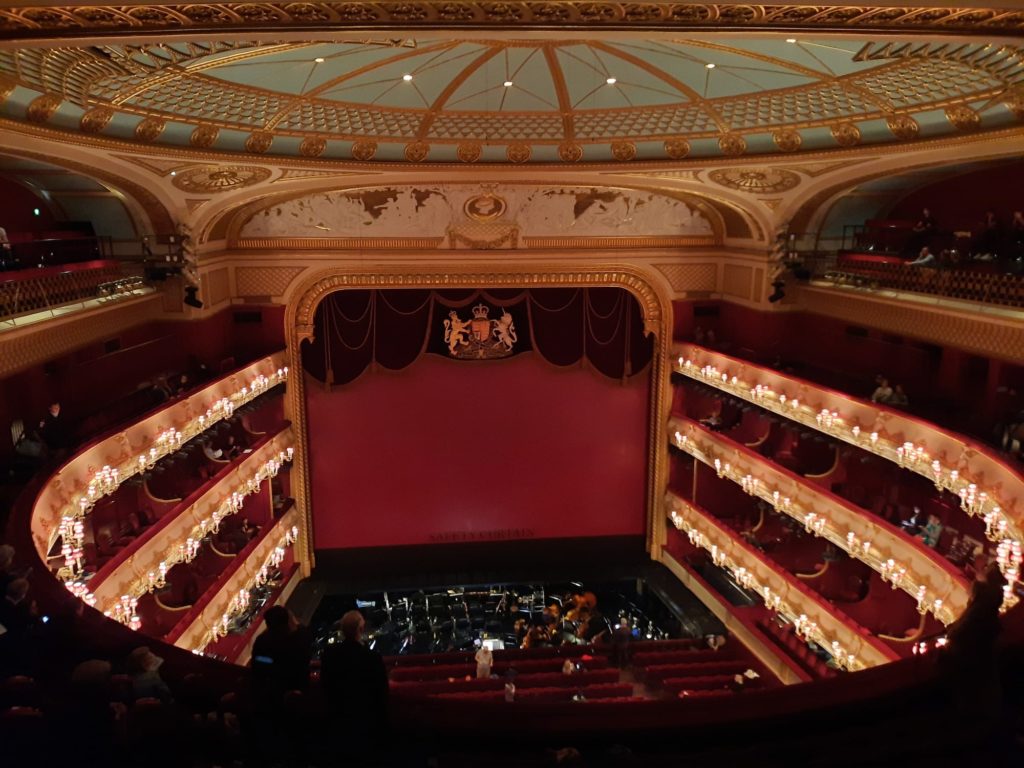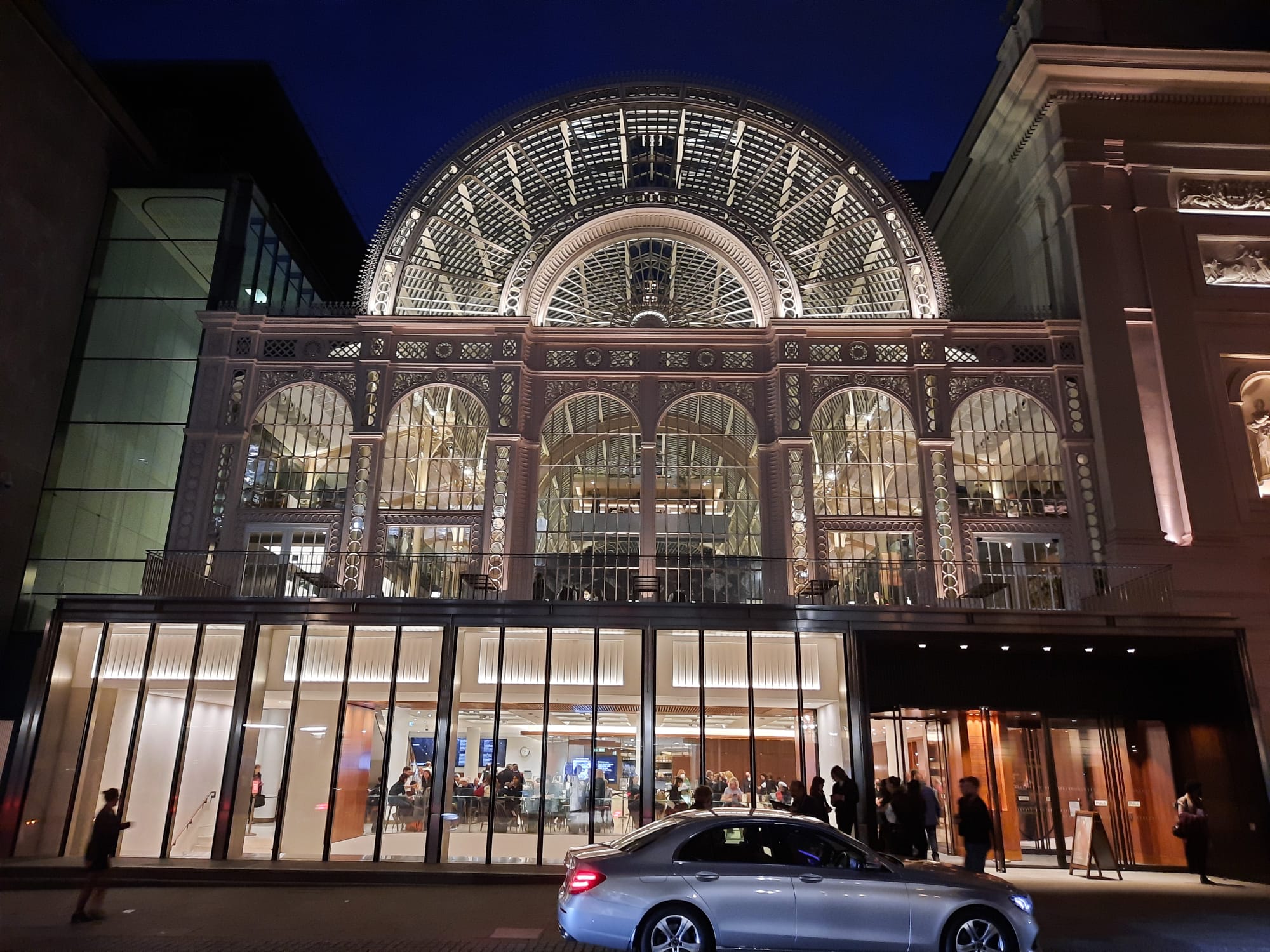The Dante Project – Royal Opera House, London
A review of The Dante Project, a new work by Wayne McGregor now on at the Royal Opera House. McGregor brings together collaborators from the worlds of dance, art and music, to evoke Dante’s vision of the afterlife on the ROH stage.

The Dante Project
Ok, obligatory disclaimer, everyone. I’m not an expert in ballet. Or music. Or Dante (which as I will explain later would have come in handy). But I am an enthusiastic amateur. So this review is written from the perspective of someone who doesn’t entirely know what they’re talking about, might focus on the wrong things, but really enjoys a night out at the ballet. If you want to look away now, feel free!
Great, you’re still with me. I want to give you a bit of background first. The Dante Project is based on The Divine Comedy by Dante Alighieri. It’s part of the 700th anniversary celebrations (if celebration is the right word) of the poet’s death. Dante was a Florentine poet and philosopher born around 1265. He wrote in local dialects rather than Latin, and is described as the father of the Italian language.
His Divine Comedy is a long narrative poem. It describes Dante’s journey through Hell, Purgatory and Heaven, exploring the state of the soul after death. The fictionalised Dante has as his guides Virgil, Beatrice (a woman he had loved), and St Bernard of Clairvaux. The structure of the afterlife is based on medieval philosophy, but it is populated in The Divine Comedy with a lot of classical characters as well, like Dido, Ulysses and Charon. The poem has had an enormous impact on later arts and literature; see, for example Rodin’s Gates of Hell project which I described recently.
So that is the source material for The Dante Project. Choreographer Wayne McGregor has brought together a crack team of talented people to bring this vision of the afterlife to life, as it were. Artist Tacita Dean has designed the sets. It has a new score by Thomas Adès, who also conducts. And a lot of talented members of the Royal Ballet are here. Including, importantly, McGregor’s long-time muse Edward Watson, in his last principal role.
Inferno, Purgatorio, Paradiso
Visually, The Dante Project is stunning. This is both in terms of the choreography, and the set. Tacita Dean’s sets use the full space of the Royal Opera House stage. The opening act (Inferno: Pilgrim) is a dark, frozen hell. An inverted mountain range drawn in chalk on the backdrop is forbidding and austere. As Dante descends the circles of hell, different scenes play out based on different sins. The dancers are liberally doused in chalk, in a metaphor for the traces their sins leave on each other and their environment. Each scene has a totally different energy, despite the constants of Watson reacting to their suffering (sometimes to the point of fainting); and Gary Avis‘s calm and stoic poise as the perfect foil.
In Purgatorio: Love, the setting and tone change completely. Gone are the rough and icy crags. In their place is a tree, glowing in a warm light. The music also changes here, incorporating recordings from a synagogue in Jerusalem. If I’m honest I was a little confused at the switch to an orientalist mood, but Wikipedia backs up Islamic influences on Dante’s work so perhaps it checks out. Dante takes a walk down memory lane in Purgatory, before bidding goodbye to Virgil at the end of Act II. Avis and Watson convey a genuine sense of affection here, and we are sorry to see him leave.
The third act is Paradiso: Poema Sacro. Dean’s set design is again completely different, with an overhead video projection and white costumes symbolising the absence of sin. Dante is here guided by Beatrice (Sarah Lamb), but this is an idealised, perfect Beatrice rather than the real woman he knew. They must part, adding the emotional turmoil to the final act. A bright light sweeps the audience, and the curtain comes down.
What Do We Make Of All This?
Well, as the section above implies, this is a work which feels rather epic. The themes of eternity and the struggle for the soul are perfectly complemented by the sets, Adès’s rich and evocative score, and the presence of so many talented dancers on stage. I very much enjoyed it from this perspective – it is stunning.
What I found more challenging was understanding what was actually going on. I have never read Dante, and know very little of the detail. The programme told me broadly what the different scenes were, but found myself trying to remember details of the scenes I liked so I could later match them to the plot (“Oh, the one who stabbed herself, that must have been Dido!”). I was talking recently about what can and can’t be conveyed through dance alone; this is a scenario where a lot more knowledge of Dante would have come in useful.
I don’t think that should put you off, though, by any means. Even when I didn’t know who the characters were I enjoyed their technical skill and the world they created. If only I was a bit more certain! I have spent some time trying to figure out if the dancer I liked so much was Marcelino Sambé as the Ferryman. I think so, in which case I will try to see other things he is cast in, but I’m not 100% sure. But whoever I am thinking of, they were fabulous, with a physicality that reminded me of Edward Watson. He has been my favourite dancer to see since I watched The Metamorphosis many years ago. But what a farewell The Dante Project is.
The Salterton Arts Review’s rating: 4/5
The Dante Project on until 30 October 2021
[
If you see this after your page is loaded completely, leafletJS files are missing.


3 thoughts on “The Dante Project – Royal Opera House, London”